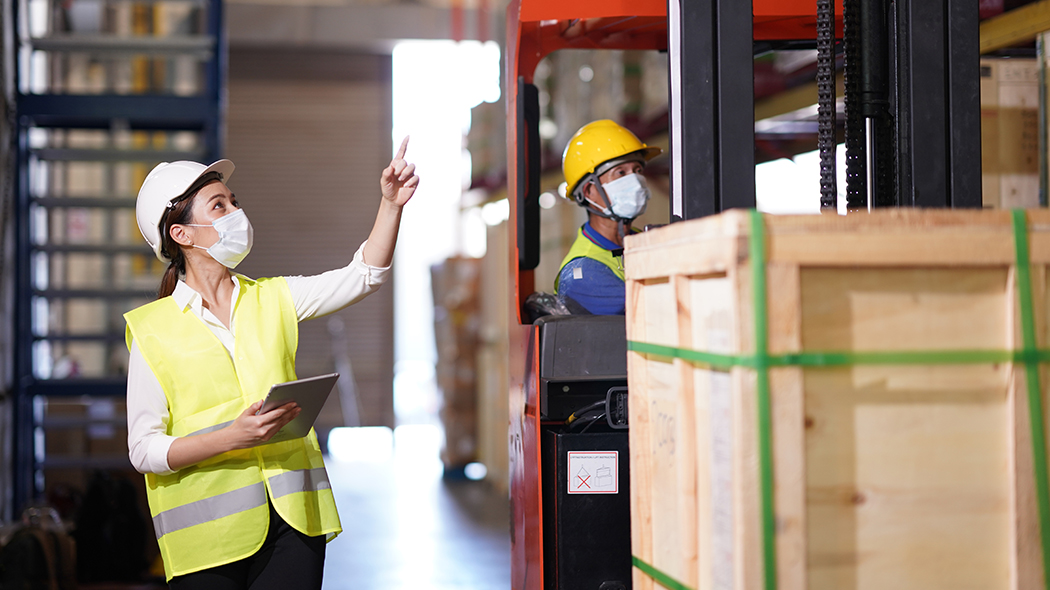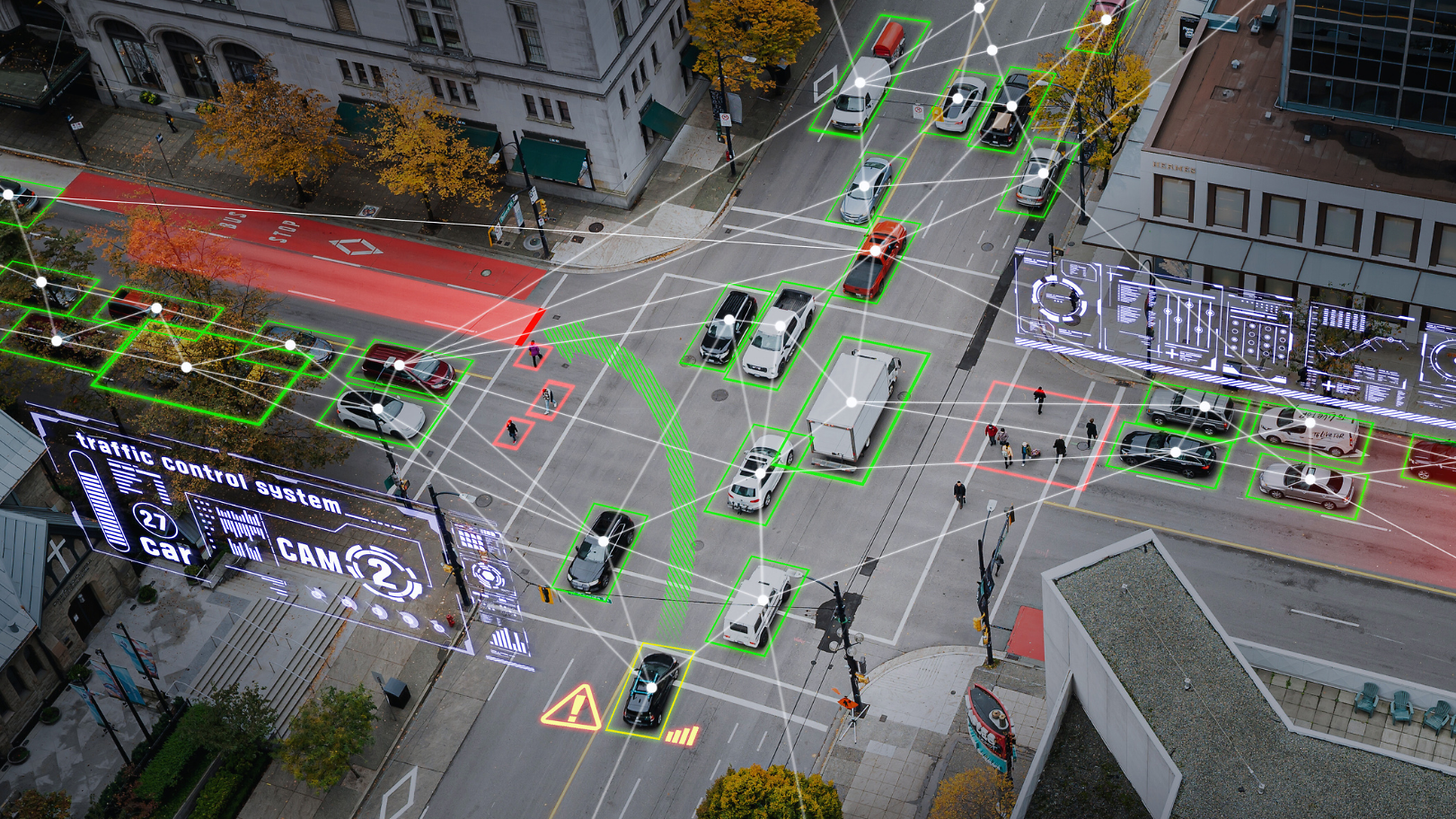Digital Helpers in the Warehouse
19.08.2021 by Ümit Günes

We may have arrived in the age of digitization, but in many instances warehousing still involves paperwork, which is both outmoded and impractical. It starts with the arrival of goods at the warehouse when paper labels on cartons or pallet sheets come unstuck or are soiled and illegible. Delivery notes on the pallet often also go missing in transit. The result is that shipment information is wrong or missing, possibly leading to the mail-order mega-disaster (at least from the customer’s viewpoint): belated delivery.
The solution is a digital label or shipping document. On its tiny display it show constantly updated information such as sender, contents and designated storage place. Geofences can be set up on an extensive works site and the information on the display will change if, say, a pallet is transferred from production to the warehouse. Equipped with a shock sensor, the device also issues a warning message if, for example, a pallet has fallen off the forklift. Damaged goods are then not forwarded to production or storage. Employees are always kept up to date about the sender, condition and designated storage place and no longer have to deal with paperwork.
Connected mobile devices, such as scanners and data glasses or gloves assist with order picking. They are linked directly to the warehouse system by WiFi or cellular. They are a technological extension of the human body, as it were, not yet at the RoboCop level but sophisticated enough to improve the day-to-day working environment. The ergonomic design of modern devices also eases the burden on employees of tedious, repetitive routine activities.
A constant Achilles heel of the human operative is a memory that does not always function perfectly. Combine that with a sense of order that is less than perfect and protracted searches are more than likely. This is where, in logistics, modern technology comes to the rescue again. If all goods in the warehouse are connected, they can always be located fast by means of an indoor tracking solution. Deutsche Post DHL Group, for example, has equipped 250,000 trolleys with tracking sensors. Every one can be traced at any time on a web portal. If the supply of an article is running low, a click on a digital service button is all that is needed to trigger a restocking.
In order picking a distinction is drawn between two models. One is Goods to Man (or Woman), the other is Man to Goods. These two programmatic concepts are standard procedures in logistics.
The connected solutions designed to help warehouse employees with order picking are as many and varied as the merchandise to be picked. A number of concepts have established themselves in warehousing:
Pick-by-Scan
Modern hand-held scanners for use in order picking offer a range of functions not dissimilar to those of a smartphone. Devices can record shipping labels that incorporate different QR and bar codes, check boxes, pictograms or printed text. They fill out digital forms automatically in a single scan and do so in seconds without the least error. A scan of merchandise and its storage location ensures precise inventory management in real time. By using the scanner’s voice function users can notify the warehouse management of, say, missing or damaged goods. In addition to conventional scanners some models can be attached to a glove.
Pick-by-Voice
Siri and Alexa, or relatives of theirs, are now available for use in a warehouse environment. Via Pick-by-Voice the order picker communicates with the warehouse system by means of voice commands. The system tells him on his headset the shelf and article number and number of items to be packed. The employee confirms the removal with keywords and the system books the transaction automatically. This procedure also ensures virtually error-free order picking that is documented in real time.
Pick-by-Vision
Pick-by-Vision uses Augmented Reality glasses. The picker sees all the information that is required, such as storage location, article number and quantity, in a display on the lens of the data glasses. The system can even show the shortest route to the shelf. To remove the goods the employee uses a ring scanner that is connected by Bluetooth to a small computer on his or her belt. As in Pick-by-Voice the operative has both hands free. According to DHL, picking with smart glasses is 25 percent faster and twice as accurate.
Pick-by-Light
Here the warehouse system is connected directly to the shelf by means of digital indicator lights. When the employee scans the barcode on his order ticket the system activates the corresponding indicator lights. They show him on a display how many articles to take from which compartment. He clicks on a button to confirm.
Pick-by-Motion
This procedure uses camera shots of the picker’s gestures and grab movements. A thumbs-up sign indicates removal of an article. Thumbs down means the article is not available. The system also notices whether an article has been allocated to the wrong lot.
Pick-by-Robot
Robots too are already in use as pickers. At the fashion store Zalando robots are still only handling shoeboxes, but AI assistance makes the Covariant model much smarter. Picking and packing 10,000 different articles with 99 percent accuracy is no problem for this robot. Initial models are also good at random bin picking, such as grabbing loose screws from a box. At DHL in Miami huans and robots work hand in hand. The human puts the articles on a conveyor belt and the Dorabot sorts them and packs them in the right box. That’s 21st-century division of labor for you! DHL says that robots are six times more efficient than humans at packing goods on a pallet.
Long routes from shelf to shelf are often the rule in order picking. They are no longer required if driverless transportation systems take the goods and packaging to the employee. In North Rhine-Westphalia, for instance, Fiege Logistik uses autonomous order picking vehicles in its warehouse. These shelves on wheels, equipped with 3D cameras, laser optics and a navigation system, locate articles themselves in the warehouse and assemble the shipment. The vehicles can also be used at night for preparatory work or for an inventory.
At DHL too, autonomous transportation robots assist with order picking. They maneuver themselves into position from shelf to shelf and save their human colleagues long walks. The pickers see the order on the vehicle’s display, place the goods in the container and confirm the procedure. The robot then heads for the next station. können According to the DHL Logistics Trend Radar these Autonomous Mobile Robots (AMRs) can increase productivity in transporting containers and pallets by 50 percent and in picking by 150 percent.
What the monthly cash report is for the restaurant owner is for the warehouse employee the inventory: a protracted session of detailed work. Luckily, robots can lend a helping hand (in the warehouse). Autonomous vehicles or even drones equipped with scanners or cameras and image-processing software, record all articles in stock with real-time wireless updates. A campus network provides swift and secure data connections.
To take an example from practice, a large steel corporation used at great expense in terms of time and manpower to inventory its external warehouses manually. A drone with a camera now records everything by air. AI then evaluates the video stream. It counts the stock, reads the serial numbers automatically and compares the data with that of the inventory system. If numbers are illegible the AI system contacts an on-site employee for clarification. The drone seeks and finds goods significantly faster than humans, speeding up the inventory process. In addition, the risk of error is lower than that of a manual inventory. Inventory lists can be synchronized automatically and updated constantly. Personnel costs and time are saved and customers can be served faster.




